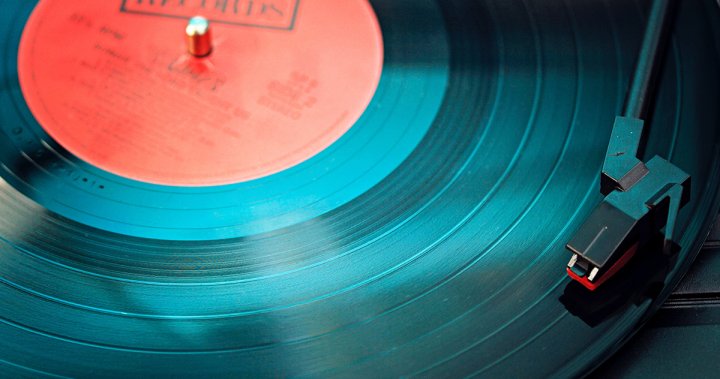My regular record dealer was over at the house the other day looking to buy some vinyl I didn’t need anymore.
“It’s over, man,” he said. “It was a really good run, but the whole vinyl thing is over. Yeah, COVID has been a problem, but there’s more to it. It’s the labels.
“They got greedy. Have you seen what they’re charging for a new record? Some single discs selling for $40! Insane. That’s gouging. No wonder sales have dropped.”
Not just dropped but cratered.
After nearly a decade and a half of astonishing double-digit growth, sales of new vinyl in Canada have been in freefall for months. According to MRC/Nielsen figures, fewer than 400,000 pieces of new vinyl have been sold in stores throughout Canada so far this year, a drop of over 26 per cent from this point in 2019.
A year ago, we were talking about how the dollar value of vinyl sales was greater than that of CDs. LPs were moving at a rate not seen in 30 years. Some were predicting that the number of CDs would drop so low that they would be outsold by vinyl for the first time since the very early ’90s.
And just like that, it all changed. Why?
Well, record stores were closed for months, which started the decline. But even though stores are open again, consumer appetite remains weak. Industry figures show that vinyl sales are struggling to recover, sputtering to achieve any traction.

At the same time, it’s become awfully expensive to buy new records. A quick browse on Amazon shows that the typical vinyl version of an album — say, anything released by Taylor Swift — costs about $10 more than the CD edition. Remember when it was the other way around? Want a vinyl edition of Daft Punk’s Random Access Memories? You’ll pay over $45 when tax is factored in — plus shipping if you’re buying online.
That was steep in The Before Times. Now? Forget it.
There are other factors beyond COVID-19 working against vinyl. Just as the pandemic was taking off in February, there was a massive fire at Apollo Masters, one of only two plants in the world that make the lacquer masters required by record pressing plants to crank out new LPs and 45s.
The other factory, which is in Japan, can only supply about 20 per cent of the world’s requirements. This acute shortage of lacquer masters has led to disruptions in manufacturing, shortages and, inevitably, higher prices for the finished product.
A few companies were manoeuvring to fill the gap left by Apollo with a process called direct metal mastering (DMM), which required substantial investments in new equipment. Then the virus hit. Supply problems continue.
Another contributing factor to vinyl’s 2020 malaise was the postponement of Record Store Day, the annual event that comes around on the third April of the year. When it became obvious that lockdowns were putting the kibosh on all retail, organizers called it off, erasing the usual spring boost in sales. The industry was robbed of usual spring excitement.
Sales of used vinyl have taken a hit, too. All the indie stores were closed for weeks and all the usual record sales have been cancelled.

“You’ve seen our record conventions,” my guy said. “They’re crowded. People push and shove and jockey for position around all the crates, putting their hands all over everything.
“You can’t physical distance. It’s just not safe. That’s why we’re moving online.”
Online is where the action is, although this kind of buying and selling tends to attract just the hardcore collectors. Casual vinyl fans — who, let’s face it, have been driving this resurrection since it began in 2008 — generally don’t bother. They’ll buy a new record from somewhere like Amazon but aren’t the kind of music consumer who will spend hours trolling for treasure on Discogs.com.
Strangely, though, Canada seems to be alone when it comes to this vinyl apocalypse. The format continues to do well in other territories.
For example, the U.S. saw double-digit growth (11.2 per cent) in vinyl sales during the lockdown. In Britain, an event called Love Record Stores Day on June 20 saw more than one million pounds (C$1.73 million) worth of records sold in a single 24-hour period.
Things are up in Japan. In Germany, the entire music industry grew by 4.8 per cent during the first six months of the pandemic, with healthy revenues coming from vinyl sales. And Australia, which goes battles with us for fifth place among the world’s music markets, reports steady vinyl sales.
Weird. So it’s just us? Apparently.

Instead of buying vinyl, the data suggests that we Canadians have entered a period when we’re moving away from physical music product. In fact, we’re embracing streaming at a rate higher than Americans. Is it because we’ve been more careful about venturing out during the pandemic? Maybe.
We’ll see if these trends continue for the rest of 2020. There is a chance that the slide will be reversed thanks to a series of Record Store Day events. When April’s RSD was postponed, organizers came up with the idea holding three such days: the just-concluded Aug. 28 event, another on Sept. 26, and a finale on Oct. 24. And as far as I know, we’ll still see the annual Black Friday edition in November. Maybe the hype surrounding those four big retail events will goose things a bit.
Or maybe not. Like my guy said, it’s been a good run.
Alan Cross is a broadcaster with Q107 and 102.1 the Edge and a commentator for Global News.
Subscribe to Alan’s Ongoing History of New Music Podcast now on Apple Podcast or Google Play
© 2020 Global News, a division of Corus Entertainment Inc.


